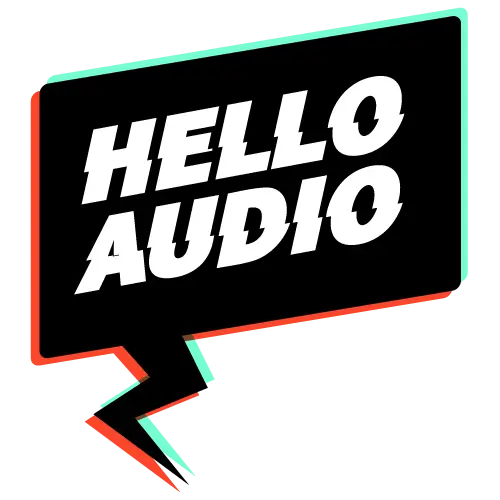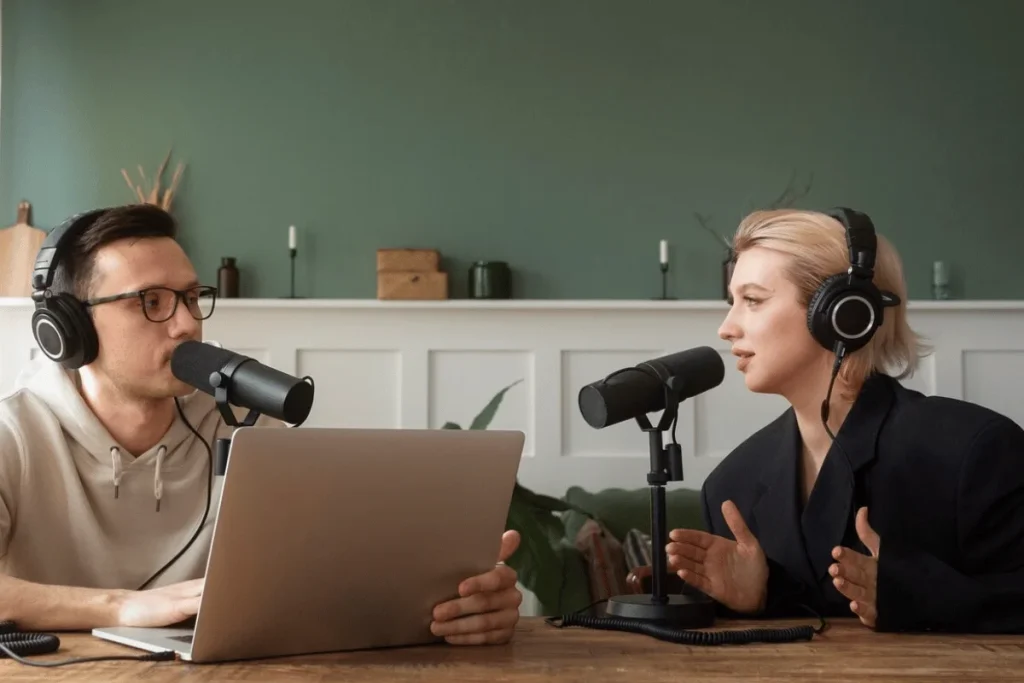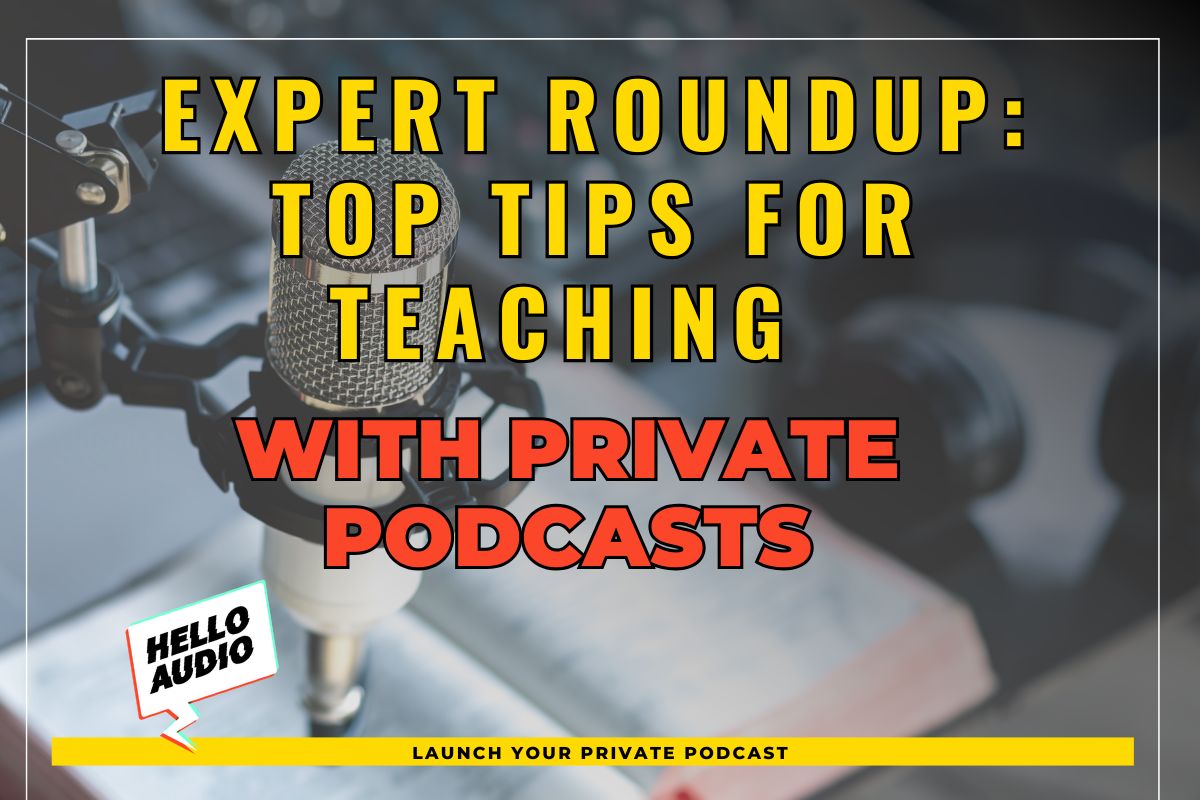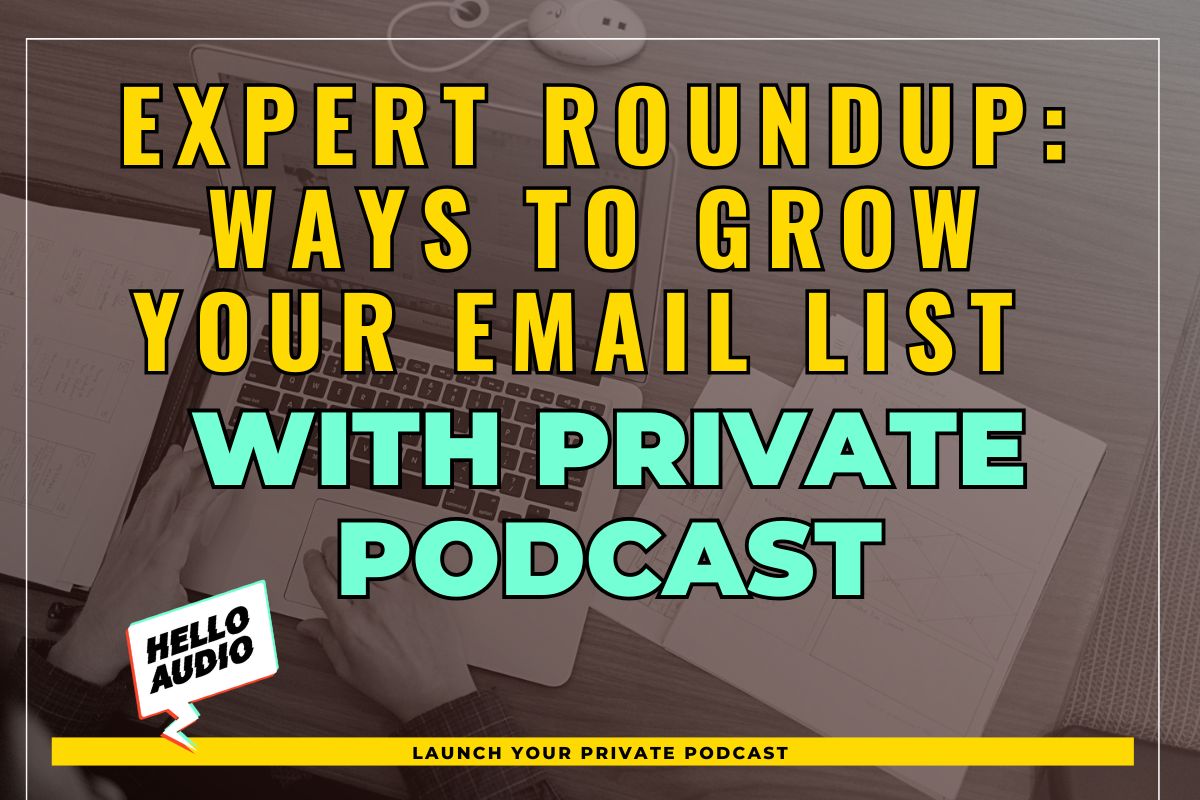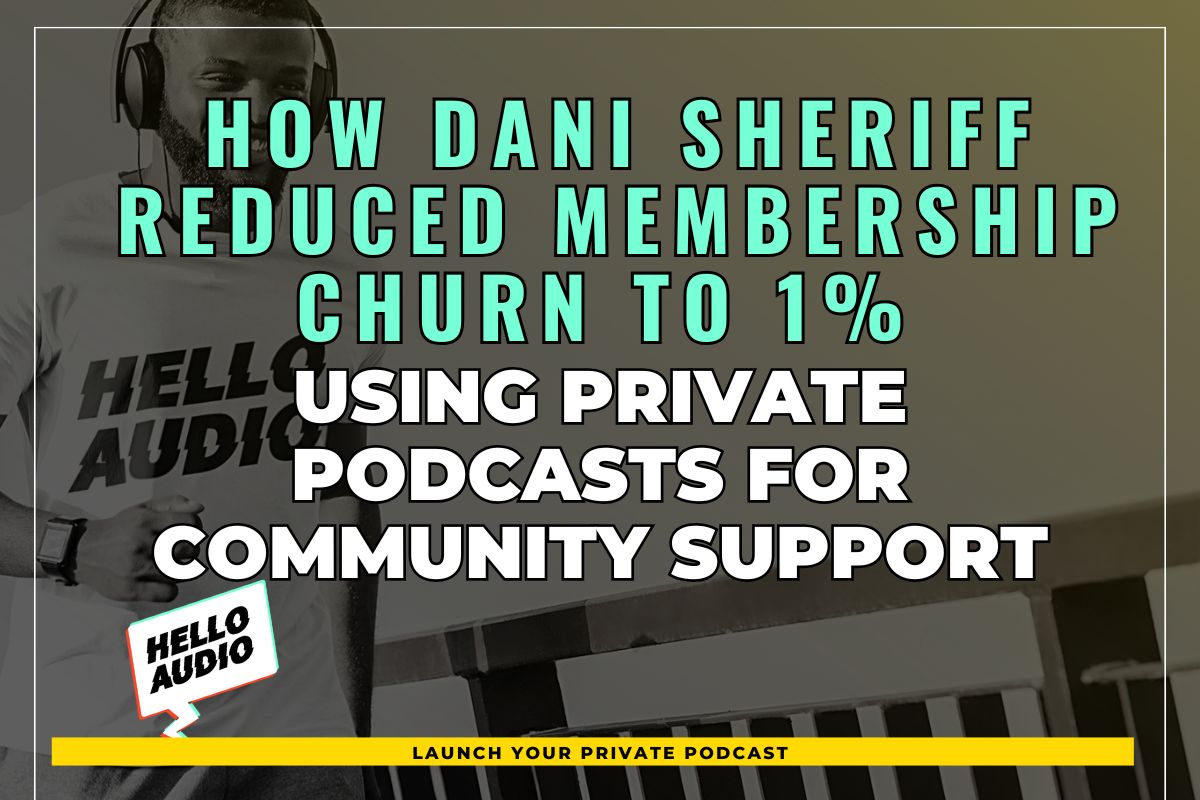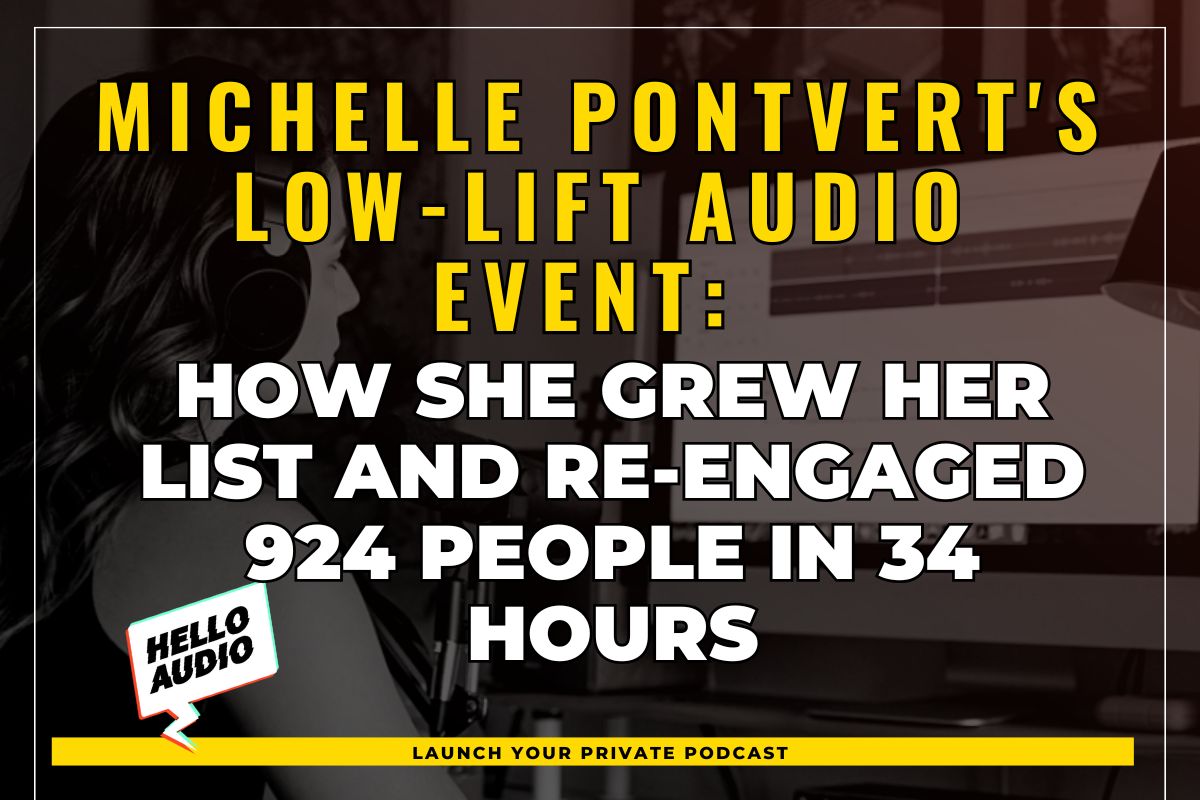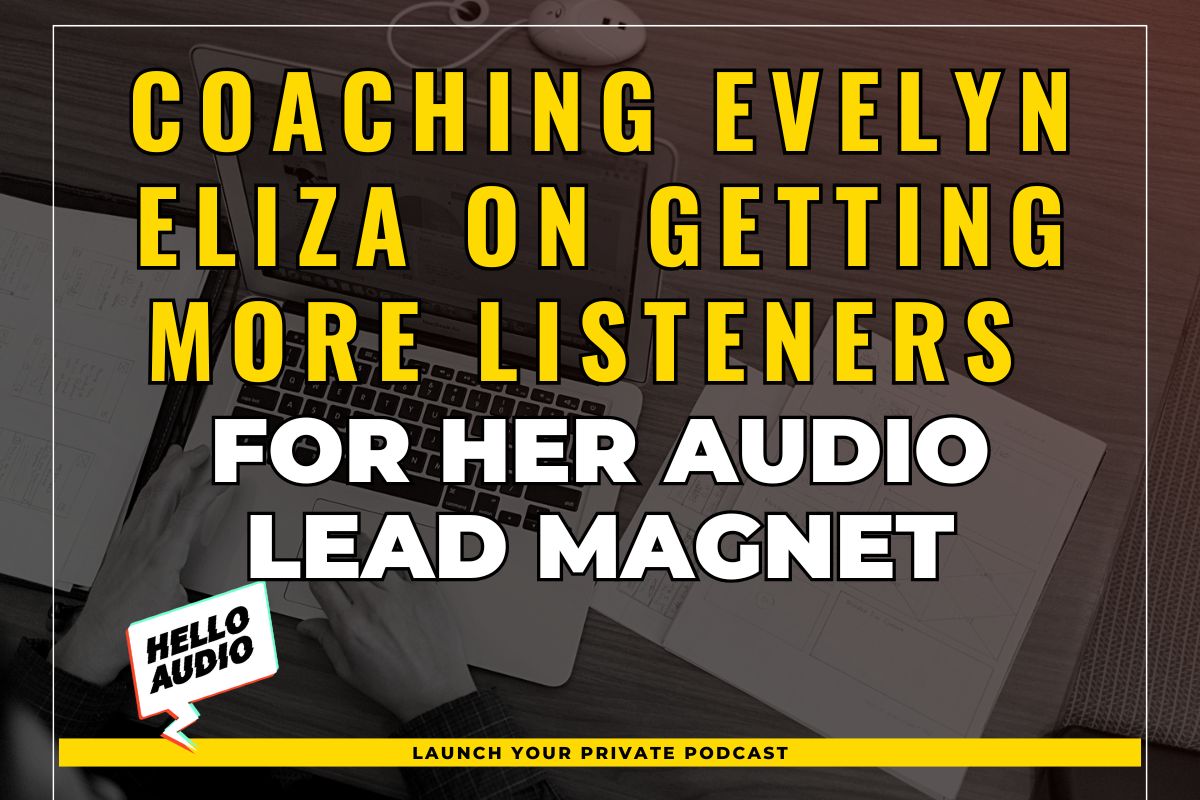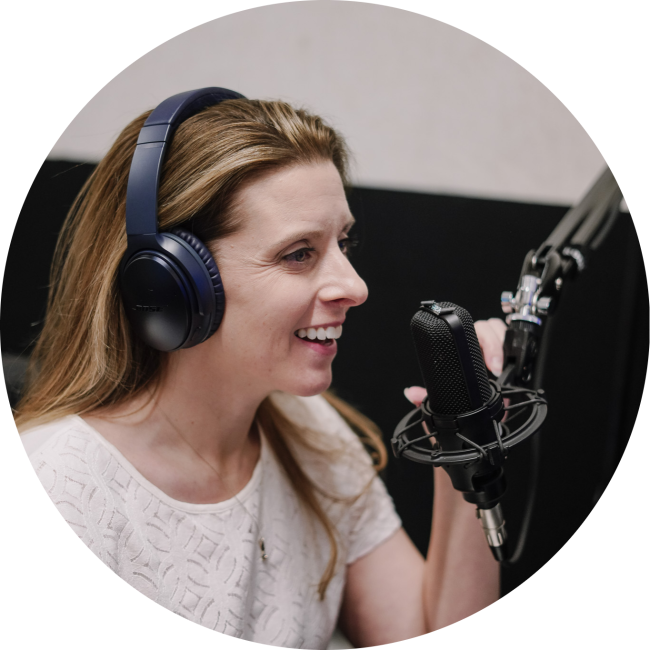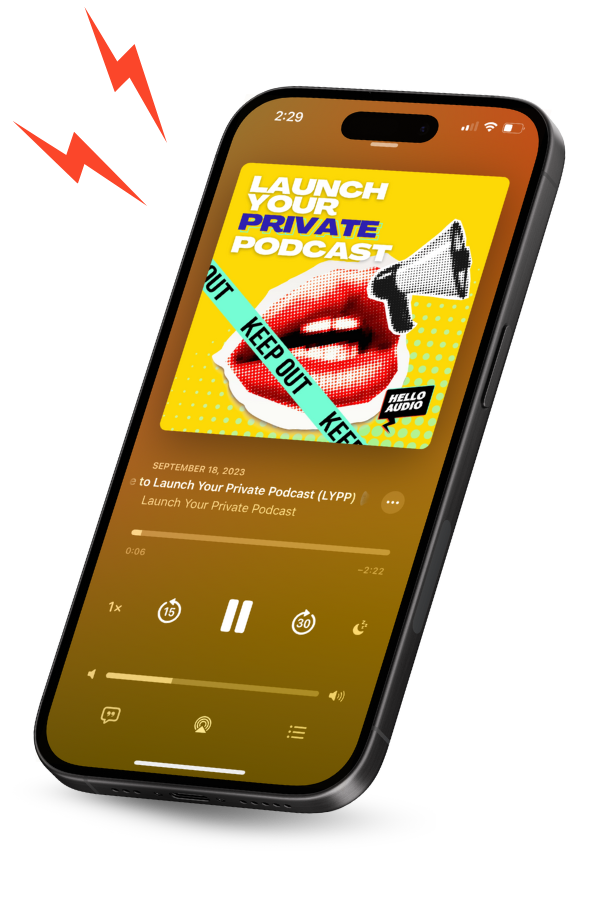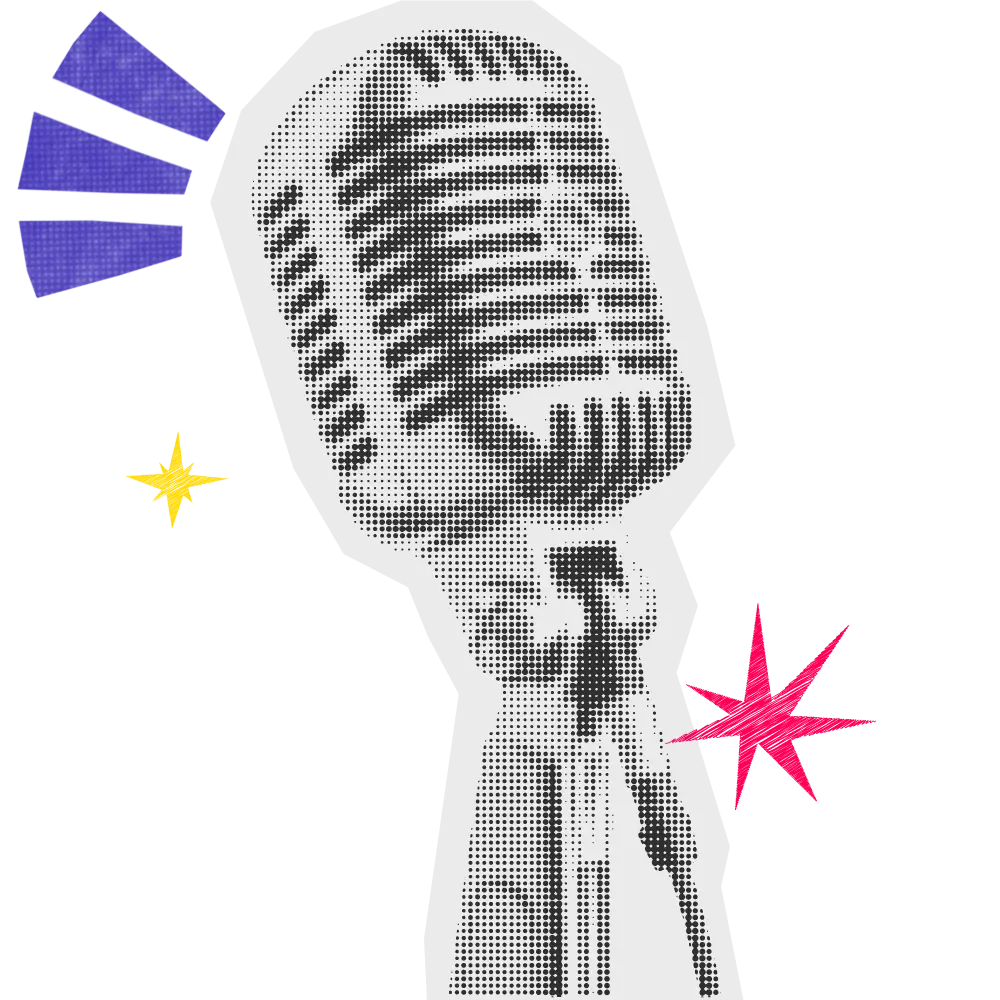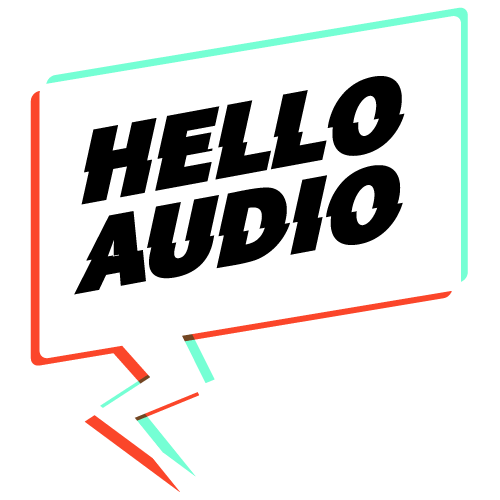Blog vs. podcast — stuck trying to decide which one to start?
You’ve seen successful bloggers build brands and an audience around their blogs, and you’ve also listened to top podcasters feature business leaders and industry experts.
But what will work best for your business?
Choosing the perfect medium can be tricky as each has distinct preferences and serves a unique purpose.
In this article, we’ll delve into the characteristics of each to help you make an informed decision.
TL;DR – Blog vs. Podcast
In a hurry?
Here’s a quick overview of blogs and podcasts and the best scenarios for each one:
| Blog | Podcast |
|---|---|
| Website or page regularly updated with posts | Digital audio content your listeners can download or stream |
| Pros | Pros |
| - Blogs are popular - Allows you to showcase the best content and grow your email list - Content is easily indexed by search engines, improving discoverability and increase organic traffic | - Creates a more personalized and intimate experience with listeners - Easy to consume on the go or when multitasking - Caters to people who prefer listening to audio - Great for vision-impaired users |
| Cons | Cons |
| - Takes time to rank in the search engines and build traffic - Requires you to master SEO tactics and stay current with the blogging trends - Highly competitive and saturated | - Challenging to source guests, record podcasts, and edit content - Monetization options can be complex and require a large follower base |
| Best For | Best For |
| Best if your audience loves reading, and it’s excellent for boosting your website traffic | Best if your audience is on the go and convenient for long-form interviews |
A blog and a podcast can be equally great for your business.
But if you must start with a podcast, remember to choose a reliable platform to create, host, and manage your podcasts.
Our platform — Hello Audio — lets you repurpose preexisting content (courses, audiobooks, meetings, and more) into private audio feeds. Then, it automatically delivers them to listening apps like Spotify.
Take the first step and get started with our 7-day trial — for free.
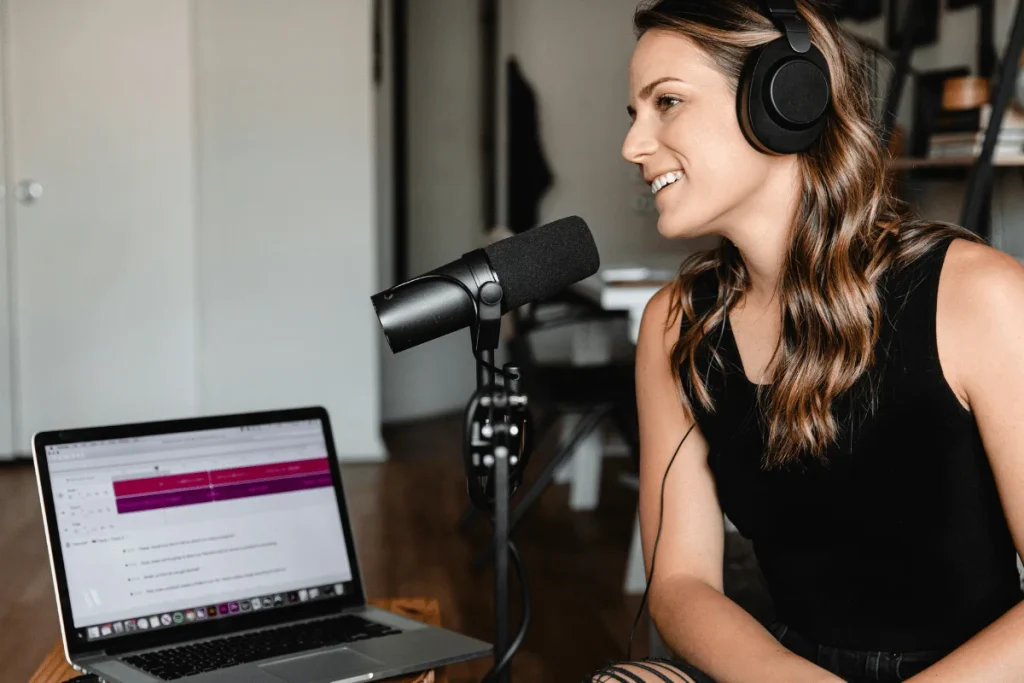
What is a Blog?
A blog is a page or website regularly updated with content (blog posts) about a niche, industry, topic, or general topic.
Blogs can also include videos, images, and other media.
Reasons to Start a Blog
Here are 6 reasons you should pick blogging:
- Boost your website SEO: Incorporating specific keywords and links in your blog posts can increase organic traffic.
- You enjoy writing: Blogging is better if you find it easy to express your thoughts clearly in writing and love finding the right words rather than speaking aloud.
- Build authority: You can position your brand as a thought leader by showcasing your expertise online.
- Generate income: Blogging can be a great source of revenue.
- Convert traffic into leads: With blogs, you can create CTAs, such as free ebooks, webinars, and trials, to build an email list.
- Generate backlinks: When you create valuable posts, gaining relevant links becomes easier. Inbound links are also essential to build your domain authority and increase your discoverability in search engines.
How to Start a Blog
So, how can you turn your idea into a blog?
Follow these 7 practical steps:
- Pick a blog name: Choose a memorable and catchy name and make sure it’s available.
- Set up your blog’s design: Define your theme and branding elements — font, custom logo, and color palette — for your blog.
- Define your audience: Understand your target audience—what they read, their lifestyle, interests, age, income, and more. This will help you write content that speaks to them.
- Decide on your niche and topic: Narrow your topic selections with your audience in mind.
- Do competition research: Do your research to understand your space, identify your competition, audit their content, and discover your differentiators.
- Plan your blog: Write down all your topic ideas and perform keyword research to select your topics.
- Write and edit your first blog post: Combine your ideas and thoughts into a blog post. Polish your content and ensure it is high quality and meets SEO guidelines.
- Incorporate a catchy title, headers, images, and keywords to make it skimmable and improve its ranking.
- Get your blog post online: Once done, upload the content to your blog.
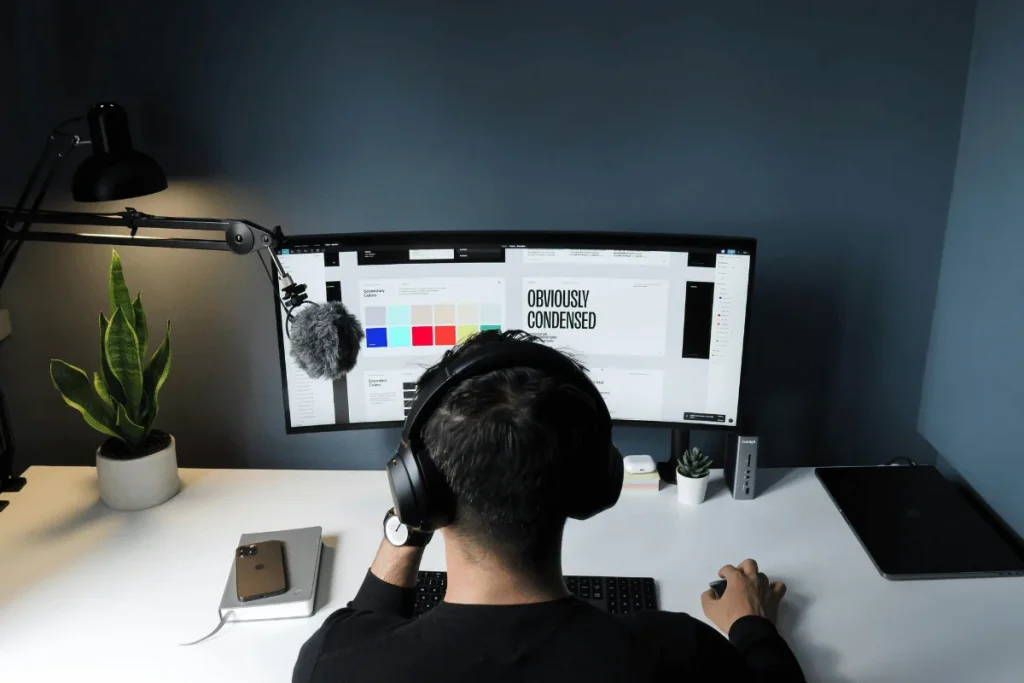
How to Get a Blog Noticed
Want your blog to rank higher on search engines and increase traffic?
Below, we’ll show you 8 strategies to grow your blog:
- Optimize for search engines: Research relevant keywords and naturally add them to your title, metadata, and content to ensure your content ranks on search engine result pages (SERPs).
- Guest post on other blogs: Write posts on established authority websites to tap into their existing audience. Guest posting helps build relationships, provides social proof, establishes you as an expert, and drives traffic from those blogs.
- Create catchy headlines: Use creativity and meta descriptions to ensure they stand out and pique your readers’ interest.
- Update and refresh your content regularly: You must add new posts frequently and refresh your existing content with up-to-date information.
- Add visuals to your blog: You can add visual elements like images, infographics, video, and audio clips to create an interactive and engaging experience for your readers.
- Incorporate clear CTAs: You must encourage readers to take specific action after reading your blog, like asking them to join your community groups to keep the conversation going, subscribing for a free trial, etc.
- Measure your blogs’ performance: Keep a close eye on metrics such as the number of impressions and bounce rate. Then, make the necessary improvements, making sure your content resonates.

What is a Podcast?
A podcast is audio-first, digital-only content you can download or listen to via a streaming service like Spotify or iTunes. It can either be a public or private podcast.
You can also have a podcast blogging website to grow your brand.
Reasons to Start a Podcast
Not sure if you need to start a podcast for your business?
Check the top 6 reasons why you need to start one:
- Reuse existing content: Our platform—Hello Audio—lets you repurpose video and audio files (meetings, digital courses, TikTok videos, and more) into private podcasts. It also allows you to auto-transcribe your episodes, manage access, and track listeners’ data per episode.
Don’t believe us?
Check out our success stories and see how our customers have used private podcasts to transform their businesses.
- Less competition: It’s easier for a business to stand out with podcasts than blogs.
- Easy to start: You don’t need a massive budget; you can start with simple podcasting equipment.
- Get recognized as an expert: Use podcasts to show off your expertise and knowledge of your industry by sharing insights.
- Personalize your brand: You can humanize your brand and create an intimate connection with your audience.
- Added source of income: Podcasts offer opportunities to make partnerships, sell sponsorships and ads, sell merch and affiliate products, and provide membership subscriptions.

How to Create a Podcast
Starting your first podcast?
We will walk you through the 6 steps to follow:
- Choose the podcast details: Choose the podcast topic, format, and name that suits your show.
- Research your audience: Identify the target audience so you can create content that resonates with them.
- Write your podcast script: Outline your ideas before recording and include elements like a podcast intro, segue, outro, and call to action.
- Get the essential podcast gear: Find the right gear, such as a pop filter, a podcast mic, and headphones. Also, choose recording and editing software.
- Hit record: Next, record your show using software like SquadCast.
- Edit and publish your podcast: The final step is to polish and enhance your audio quality. Once done, use a hosting solution like Hello Audio to distribute your audio feeds to significant directories.
How to Grow a Podcast
After recording your show, you should grow your podcast.
We’ve put together 8 strategies to get you started:
- Add the video element to your show: Tap into new audiences by recording videos of your podcasts. You can then share the podcasts on YouTube and short video clips on social media.
- Make your podcast discoverable: You can make it easy for your listeners to find you by including a podcast description, timestamps, and reference to your credentials.
- Incorporate text transcripts: To maximize your reach to the audience with hearing impairments, top off your podcasts with word-for-word transcripts.
- Use a CTA in each episode: Asking your listeners to take action, such as subscribing or joining your community groups, can help spread the word about your show and create an active community.
- Submit your show to every podcast directory: You need to get your show to all the major podcast platforms (like Spotify and Apple Podcasts) and other directories like iHeartRadio and TuneIn.
- Use paid advertising: You can purchase Google or social media ads to target your potential listeners.
- Leverage interview shows: Invite guests like industry experts on your show to reach a wide range of listeners. Also, appear as a guest in other podcasts to showcase your expertise and knowledge to a new audience.
- Create your podcast website: Start a site where listeners can learn more about you and your show, allowing you to build an active community.

Relevant Characteristics Between a Blog and a Podcast
Still confused?
In this podcast vs. blog breakdown, we shall highlight the key characteristics between the two.
| Blog | Podcast | |
|---|---|---|
| Format | Visual | Audio |
| Accessibility | More readily available | Less readily available |
| Engagement | Feel less intimate since the audience doesn’t interact with your voice | Highly engaging since podcast conversations are relaxed and provide an opportunity for storytelling and live sessions |
| Time Investment | Starting and posting a blog takes between 3 to 4 hours (or more) | Recording a podcast requires 4 to 5 hours, with additional time to prep and set your equipment |
| Audience Reach | Anywhere online | Can only be downloaded, shared, and consumed on podcast platforms |
| Consumption Environment | On the internet | Podcast directories and streaming apps like Spotify, Google Podcasts, iTunes, and more |
| Brand Recall | Lacks personality, making it difficult for readers to recall your brand | Leaves a lasting impression on listeners by sharing relatable stories, making brand recall easier |
Similarities and Differences
Both content formats have plenty to offer.
Jump in as we explore how a blog and a podcast relate and differ.
Blog and Podcast Differences
Here are the significant differences between podcasts and blogs:
- The medium: The most obvious difference is that blogs are written (though they usually include visual elements), while podcasts are spoken.
- Reach: Blogs stay on your website and reach your readers through SEO and marketing efforts, while podcasts are downloaded and distributed through streaming apps like Spotify.
- Required skills: You require writing, researching, text editing, and proofreading skills to create a blog. In podcasts, you need skills to record and edit the content and use podcast hosting solutions.
- Popularity: Although the older generation is catching on, podcasts are popular with the younger audience. Meanwhile, blogs appeal to an older audience.
Podcast and Blog Similarities
Let’s explore 5 common similarities between podcasts and blogs:
- Great for calls to action (CTAs): Both mediums offer excellent opportunities to include CTAs within the content and tell readers and listeners to take the desired action.
- Opportunity to create quality content: Both provide a chance to tell your story, answer questions, and provide value to your audience.
- Boost your SEO: You can incorporate low-and high-volume keywords in your titles, podcast descriptions, and throughout your blog posts to improve your ranking in search results.
- Variety of content types: You can use either medium for interviews, tutorials, fiction, news, and reviews.
- Require a content calendar: Both need a regular posting schedule to build your audience.
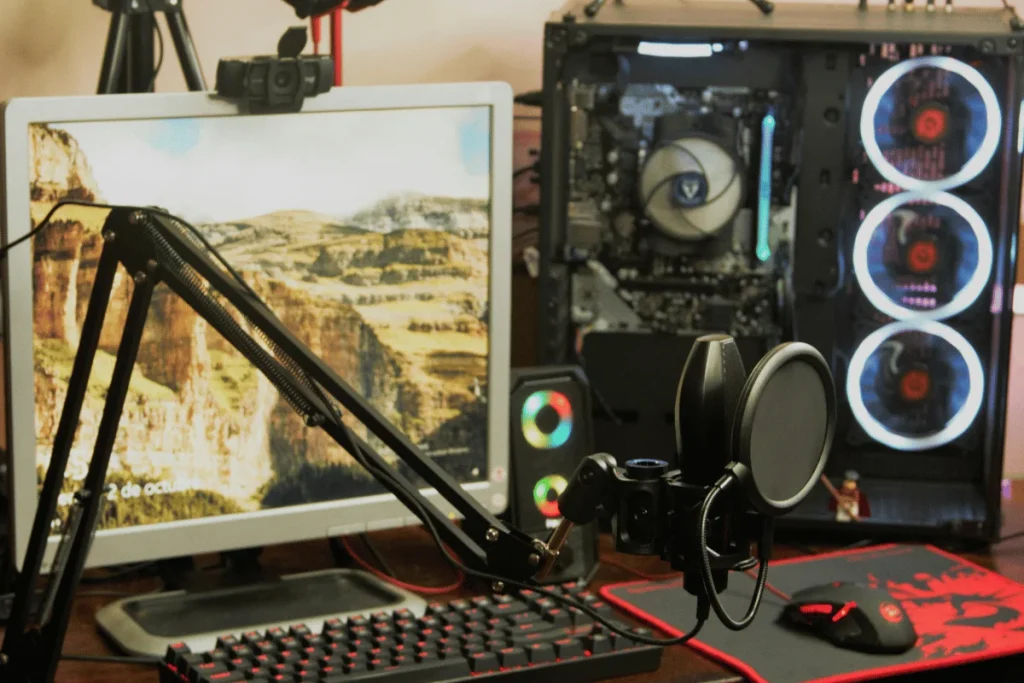
What About a Vlog or YouTube Channel?
Simply put, a video blog (vlogs as popularly referred to) is a blog where you regularly post video content.
You should consider starting a vlog because:
- Some people enjoy long-form video content.
- Vlogging is very popular and current.
- You can leverage the second most visited site in the world — YouTube.
- You can also repurpose long-form content into Instagram reels, TikTok videos, and YouTube shorts.
- While it’s not guaranteed, YouTube has excellent revenue opportunities.
- You can create authentic relationships with your viewers, fostering a deeper connection.
There are some cons, however. Let’s list some of them:
- The competition is stiff.
- You need to invest in expensive video and audio recording equipment.
- You might require technical video production skills.
- Creating vlogs requires time to film, edit, and upload videos.

Bottom Line: Blog vs. Podcast
At the end of the day, both podcasts and blogs give your business a competitive edge.
Choose a blog if you enjoy writing, want a budget-friendly option, and want to boost your site’s SEO.
If you’d rather speak than write, podcasting could be ideal. You can connect intimately with listeners and bring new insights to your audience.
Ready to start a podcast?
At Hello Audio, we provide an easy way to launch, distribute, and manage your private podcasts.
Our platform lets you easily repurpose your existing video or audio files into private audio feeds so your audience can listen to them anytime, anywhere. We then auto-deliver the private podcasts to your favorite podcast players, like Overcast and Apple Podcasts.
Join our free 7-day trial today (no credit card required) and join 70% of our users who launch their first private podcast in less than a day.
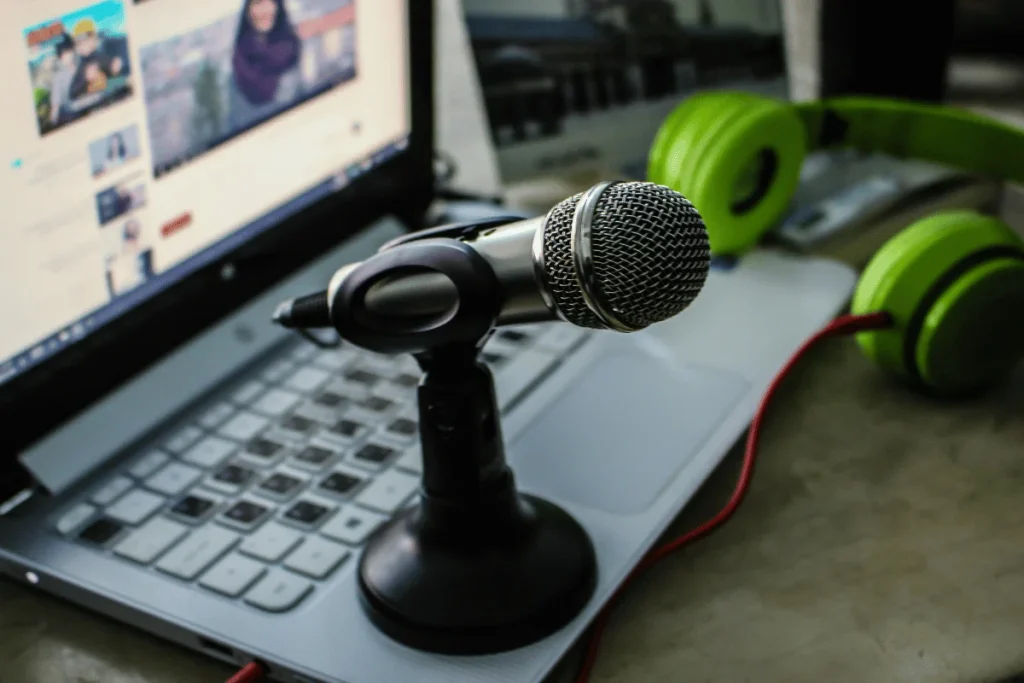
Frequently Asked Questions (FAQs)
Let’s look at some FAQs to ensure that all your answers on podcasts vs. blogs are covered.
What Makes More Money, a Blog or Podcast?
The short answer — it depends.
The amount you earn from your podcast or blog depends on the niche, audience size and engagement, the quality of your content, and the digital traffic.
On average, bloggers can earn between $20 and $35 per 1,000 page views, while podcasts earn around $20 to $100 per 1,000 listens.
What are the Best Tools to Start a Podcast and a Blog?
The best tool to start a podcast is Hello Audio.
Our platform allows you to drag and drop your video (or audio) files, and it automatically generates private podcasts.
Whether it’s a digital course, call recordings, or more, your audience can consume your content on the go.
On the other hand, the best tools for starting a blog are Google Docs, Google Search Console, and Grammarly, among others.
Can I Turn My Blog into a Podcast?
Absolutely yes!
You can pick your finest blog posts and transform the information into podcast scripts. After recording your audio show, use our Hello Audio platform to publish and manage your private podcasts.
Should You Start a Blog and a Podcast at the Same Time?
Yes, you should!
Blogs and podcasts work well together to enrich your audience’s experience. You can create audio summaries or embed past podcast episodes into your blog content.
You could also use the written content as podcast show notes or a description. In addition, you could use blogs to expand concepts in your podcast.

